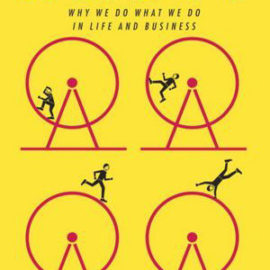Want to learn the ideas in Switch better than ever? Read the world’s #1 book summary of Switch by Chip Heath, Dan Heath here.
Read a brief 1-Page Summary or watch video summaries curated by our expert team. Note: this book guide is not affiliated with or endorsed by the publisher or author, and we always encourage you to purchase and read the full book.
Video Summaries of Switch
We’ve scoured the Internet for the very best videos on Switch, from high-quality videos summaries to interviews or commentary by Chip Heath, Dan Heath.
1-Page Summary of Switch
Overview
Switch: How to Change Things When Change is Hard (2010) tells us how to bring about change in an organization. The main focus of the book is on changing behavior by appealing to both sides of people’s psyches—the rational side and the emotional side. It explains that sometimes one side can work against the other and sabotage successful change, so a leader must connect with both sides. To stimulate real change, a leader must first stimulate the emotional side of a group’s psyche to get things moving, then harness its rational side to give it direction.
Although appealing to people’s rational and emotional sides is the key to successful change, leaders also need to contend with situations that prevent change. In such instances, leaders can change an environment in small ways so that it facilitates the desired changes.
The authors use a metaphor from Jonathan Haidt’s The Happiness Hypothesis to illustrate the principles of change. They call it riding an elephant. The rational side is the rider, and he or she directs the elephant on whose back he or she sits (the emotional side). To facilitate change, you need to have both sides working together in harmony.
Key Takeaways
To change an organization, leaders need to get people on board with their ideas. To do that, they should appeal to the hearts of those people as well as their minds. They also need to adjust situations so that people can accept and embrace the changes.
People who rely too much on the mind are rational, but they can’t make decisions. People who rely too much on their hearts are emotional, and they act without thinking.
Sometimes, organizations have to change. To make that happen, leaders should focus on what’s going right and not just criticize the problems. They should also be specific about the changes they want to implement rather than talking in generalities. Leaders should also explain why these changes are important and how they’ll help people achieve their goals. Finally, leaders need to motivate employees by making emotional appeals for them to support the proposed changes.
Reinforcement is the key to sustaining change. If you reinforce a behavior, it becomes stronger and more likely to happen again in the future.
Key Takeaway 1: To generate change in an organization, leaders need to get people to buy into desired changes. To do so, they need to appeal to people’s hearts as well as their minds, and must adjust situations to facilitate change.
To bring about change, leaders must appeal to the mind and heart of their followers. They should explain why change is needed and then alter the environment so that it facilitates the desired behavior. If a leader doesn’t do this, his or her efforts will be futile. One way to think about changing people’s minds is by using an analogy of riding an elephant: The rider represents someone’s rational side, while the elephant represents their emotional side and what they feel in their gut. What path they take determines how successful they’ll be at achieving real change.”
To understand how this theory works, we can look at the news media. Before the Internet became a major source of people’s news in the mid-1990s, newspapers and television broadcasters were some of the most profitable businesses in the world. As more people went online for their news, advertisers began to favor websites over print publications because they could better target potential customers on websites. This caused many newspapers and TV stations to lose money as revenue decreased while expenses stayed constant or increased. Newspapers appealed to both journalists’ minds and hearts by showing them that only a new kind of journalism could save their industry from extinction, which was appealing to their rational side; meanwhile, newspaper leaders made it easier for journalists by bringing in consultants who helped them learn new skills like writing for digital media—this was an emotional appeal.






